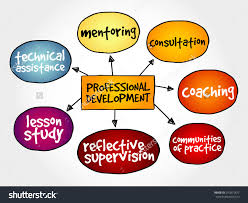Standard
Data-based Decision-making: Value the use of data as the starting point for professional work.
Artifact Context
EDTECH 795A, Seminar
Mathematics Curriculum Recommendation
Individual Project
I worked as an educational consultant to recommend a mathematics curriculum for New School in Watsonville, California. New School, a Community Day High School located in Watsonville, California, is in the process of redefining its goals for students. The school, founded to offer intensive socio-emotional support and an accelerated credit recovery program, has grown from 20 students to 70 students over the last 15 years. For many years academic instruction took a back seat to counseling and therapeutic interventions. The school's principal and district supervisor retired in December 2008, spurring an examination of the school's academic structure.

I delivered a report that:
- Contains an analysis of New School’s student performance in mathematics for the last three school years
- Reviews the current curricular resources
- Examines math classes at alternative schools in the same district
This formed the basis of specific curricular and pedagogical recommendations for New School.
Link to Standard
Data collection was the logical starting point for this project. Although my time line for completion was short, I recognized the importance of gaining a comprehensive understanding of the learners, their past performance, the environment, and specific learning material's effectiveness. Dr. Bober, my client, and I worked closely to develop a data collection plan that considered the numerous factors supporting a curriculum recommendation. My recommendation was informed entirely by the data that I collected.
Type of Data Collection | Data Source | Relevance to Report |
Literature Review | Report from the American Educational Research Association | Findings from report on upgrading mathematics instruction for parallel population in CA |
Performance Analysis | New School's School Accountability Report (3 years) | Longitudinal student state test data |
Cause Analysis | Interview and survey of New School faculty and staff | Identify and delineate performance factors relating to students skills, knowledge, motivation, and environment |
Environmental Scan | Observation, interview, and survey of alternative high school math teachers | Comparative data, identification of curricular elements and best practices |
Results from two curriculum pilots | Rapid pilot of two mathematics curriculum's resources and teacher supports | Preliminary evaluation of readily available curriculum resources |
Challenges and Opportunities
Several challenges arose during the development of my report. I am the school's only math teacher, forcing me to wear two hats simultaneously throughout the project. Bias can affect reporting when the researcher is one of the subjects. I attempted to maintain objectivity throughout the project and keep my role as math teacher separate from the role of consultant. A tight turnaround time line for completion made it necessary for me to gather data quickly. Given more time, I would conduct a broader literature review, conduct the environmental scan described above with a much larger sample population, and formally evaluate the curriculum's pilot.
The project afforded the opportunity to learn more about my school site, form collaborative relationships with teachers in my district, and test curriculum with my students. I also gained insight into the legislation affecting school funding and my school's historical performance on standardized tests. Finally, I gained real-world practice using the ARDDIE model to structure my work.
Professional and Personal Growth
I have a tentative personality and consider myself a "behind the scene" kind of worker. This project forced me out out my comfort zone because I had to actively seek out other math teachers then request survey completion, personal interviews, and classroom observations; The investigative work in the project boosted my soft people skills and now I am much more comfortable initiating contact with individuals. Working through the planning for data collection taught me to consider the different sources that would strengthen my findings. I learned the importance of a well constructed survey and that I should schedule ample time to the refinement of the instrument. Feedback from my client revealed the aspects of the work that were most important to her, lending insight into the mind of the client. Our country is shifting instructional paradigms to accommodate a post-industrial economy. In this project I gained skills and practice that would allow me to collect and analyze data to support the restructure of a learning environment with emerging needs.
References
Gamoran, A, Porter, A.C., Smithson, J. & White, P.A. (1997). Upgrading High School Mathematics Instruction: Improving Learning Opportunities for Low-Achieving, Low-Income Youth. American Educational Research Association., Retrieved on April 19, 2009, from American Educational Research Association.
Pajaro Valley Unified School District. (n.d.) New School Facts and Accountability Information. Retrieved April 17, 2000, from http://pajarovalley.schoolwisepress.com/home/site.aspx?entity=24121&year=2008&locale=en-US
San Diego Unified School District. (2006). San Diego Unified School District Fact Sheet. Retrieved April 17, 2009, from http://www.sandi.net/comm/factsheets/ayp.pdf
Appendix A
Survey Data Analysis